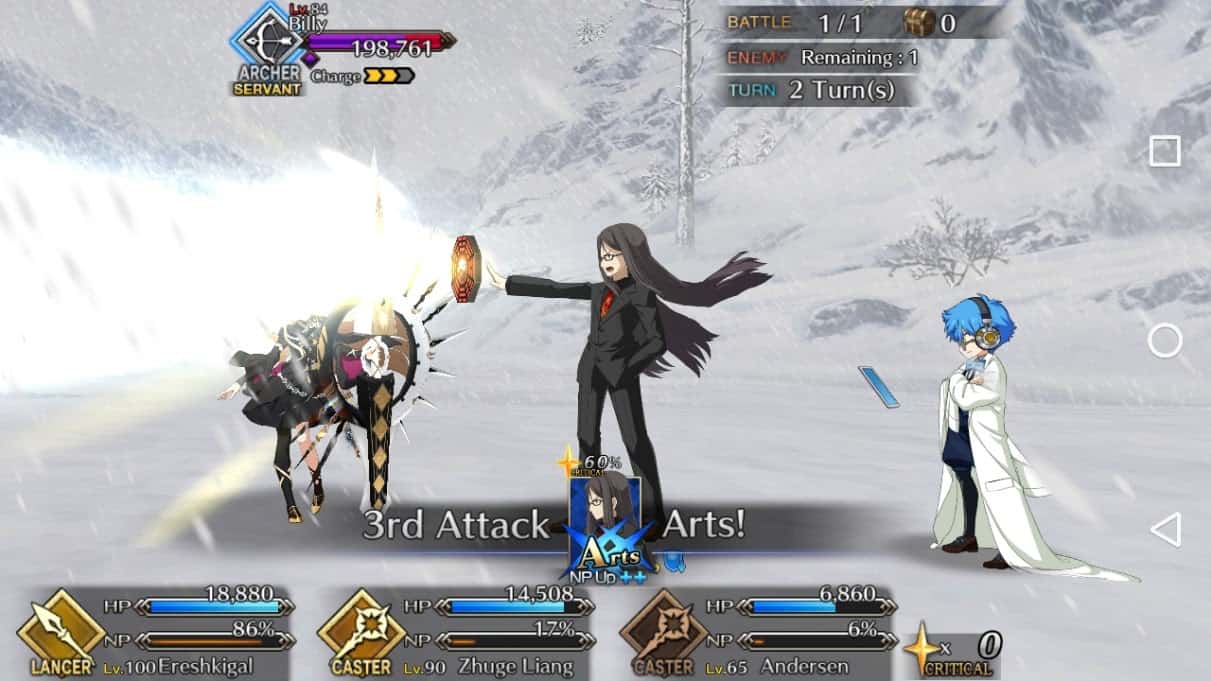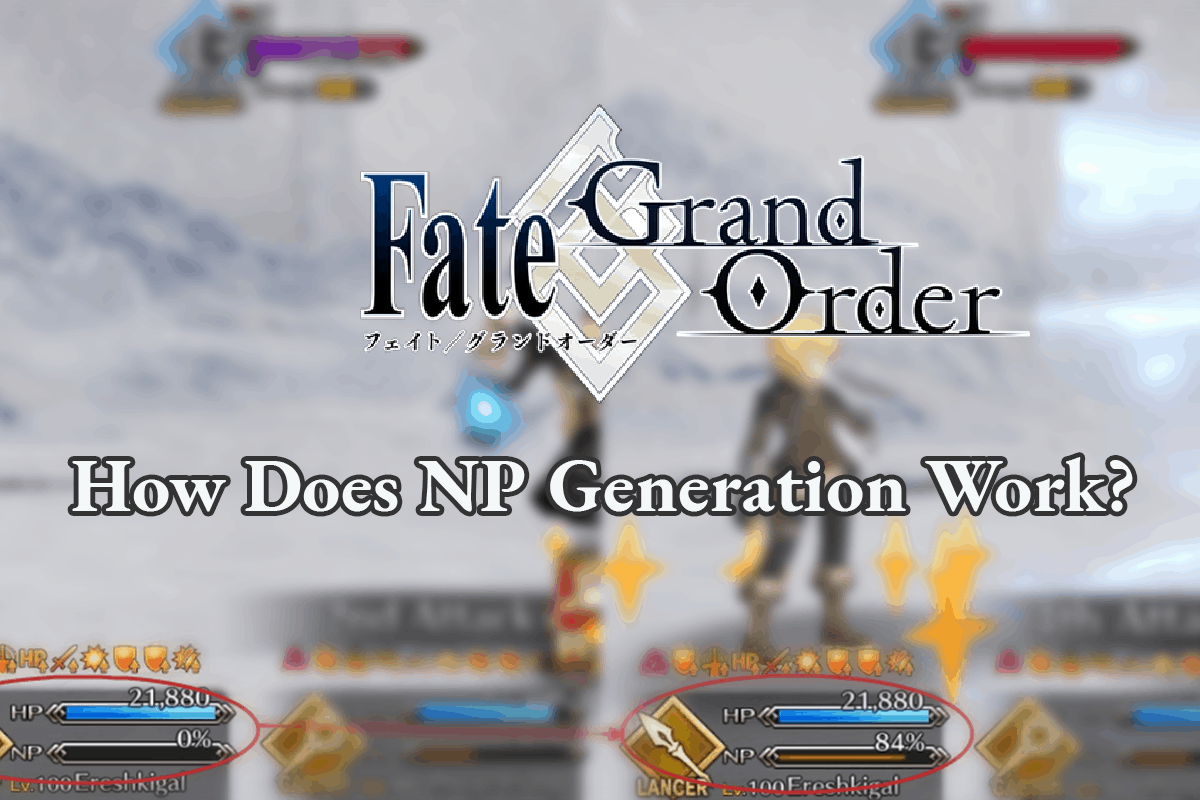
With Skadi on the horizon, it’s never been a better time to understand just how NP Generation functions in GO. If you’re familiar with our rundown on the damage formula, this one is much simpler, thankfully. There are just a few mechanics to really sink your teeth into to understand how those percentages start to stack up.
The most important rule of thumb to pursue for NP charge is crits and overkill. The two are available to everyone, not just characters with particular skills. They’ll produce huge differences in your NP charge! Card Performance and, naturally, increased NP Generation help too.
The Formula

npGeneration (round down to two decimal places) = round down(servantBase × [(cardMod × cardPerfomance) + artsFirst] × npGenUp × crit × enemyNPMod) × overkill
It’s a decent amount to chunk through, but this is pretty tame overall. A lot of this you can probably already understand just from a surface level. Note that this formula is for individual hits. Your character likely has more than one hit on their Quick or Arts Cards, so remember to multiply again for that.
The first thing you’re likely noticing is that this formula rounds down. Both its final result and the pre-overkill values should lose anything more than two decimal places, and you always round down. .009 is still just .00 for NP charge. There is a notable exception that you have likely seen before with any extended play; 99% NP charge gets rounded to 100%. It is, or was at one point, possible on Android due to a hardware difference to end up with 99% NP charge if you had a scenario where the hidden decimals made the value 99.00% exactly. You’re not likely to run into the problem though, as most servants find it very hard to generate flat amounts of NP charge.
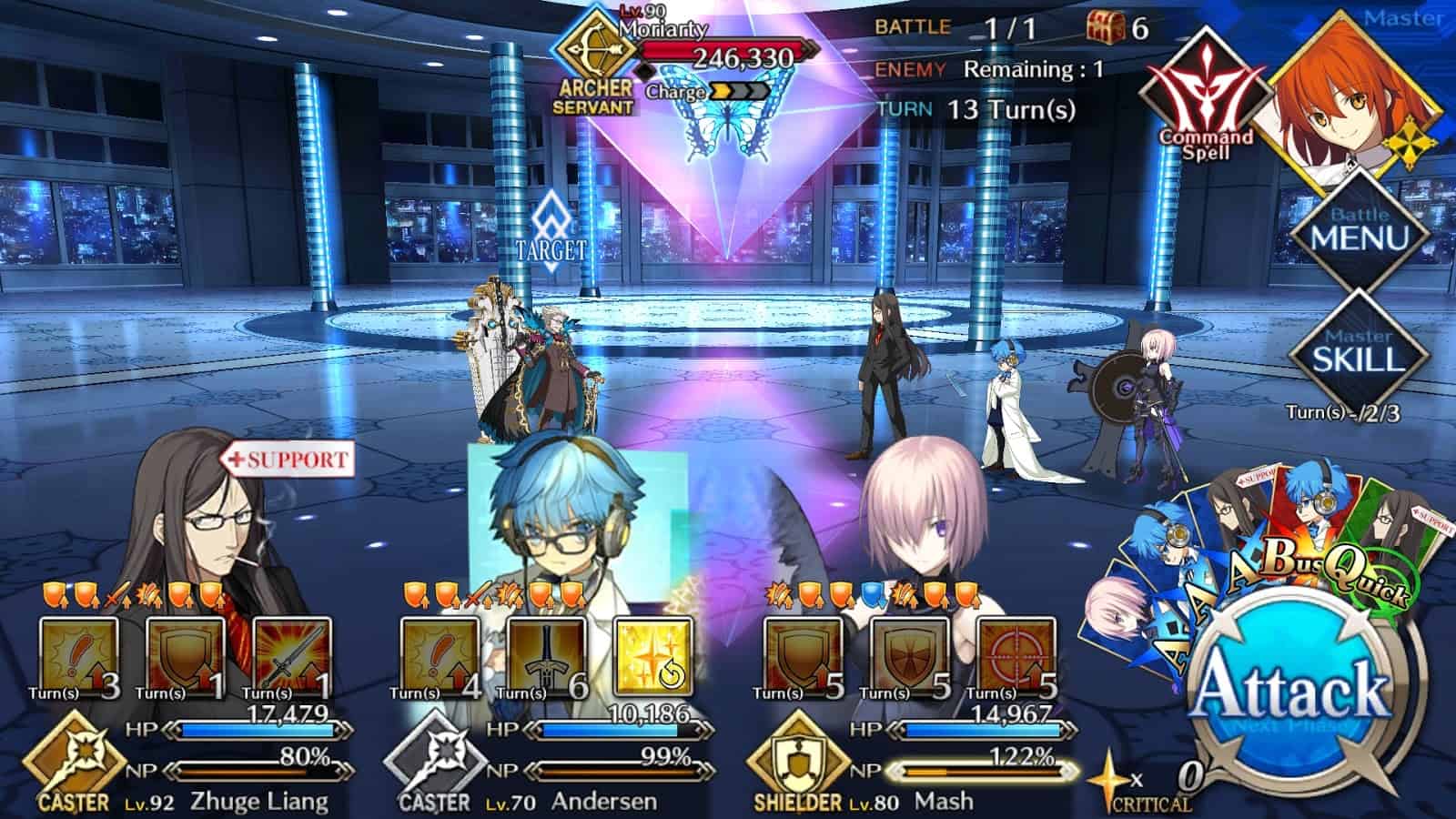
Outside of this, Servant Base NP Rates are the hidden rate at which a character charges their NP. You can find these listed in any servant detail rundown. Enemies have a corresponding multiplier that changes how much NP charge you get when hitting them. This doesn’t really get mentioned in-game and can lead to the feeling that NP Charge is somewhat random. The values are known for some number of enemies and seem to correspond to their class and whether or not the enemy in particular is undead. Undead multiply their class’ NP multiplier by 1.2. When in doubt, though, just test.
| Enemy Class | enemyNPMod |
| Saber | 1.0 |
| Lancer | 1.0 |
| Archer | 1.0 |
| Assassin | 0.9 |
| Rider | 1.1 |
| Caster | 1.2 |
| Berserker | 0.8 |
| Ruler | 1.0 |
Card Position
As you are taught in the tutorial, the position that your card is in will increase its potency. This is true for all effects. In addition, first position arts cards add a flat +100% to the multiplier of all cards in a chain. This is the base from which you adjust all your other values, and the simplest way to increase how much NP you gain, as the results are very beefy at no real cost to you. Buster cards have 0% internal NP multiplier no matter their position, and will only generate NP charge if placed after an Arts Card. NPs always use the Position 1 value for their card type and don’t benefit from the first card bonus.
| Quick | Arts | Quick with First Arts | Arts with First Arts | |
| Position 1 | 100% | 300% (NP only) | – | 400% |
| Position 2 | 150% | 450% | 250% | 550% |
| Position 3 | 200% | 600% | 300% | 700% |
Keep in mind that usually Quick cards have higher hit counts than Arts cards. That can result in much closer charge values from the two than you might expect. A few characters even have more than triple the hits on their Quick cards, making Quick cards actually produce more NP than Arts for them.
Crits
First and foremost, the biggest surprise for most players; Critical hits increase NP charge the same way they increase damage. This is part of why characters like Lancelot seem to recharge their NP so much better than other basic arts characters. Above you can see the earlier Ereshkigal screenshot after a single critting Arts card in position 2; she managed 32% with a single card. If you can afford to be critting, you always should aim for it, as the doubling it does for your NP charge extends out to all of your other buffs as well.
Buffs
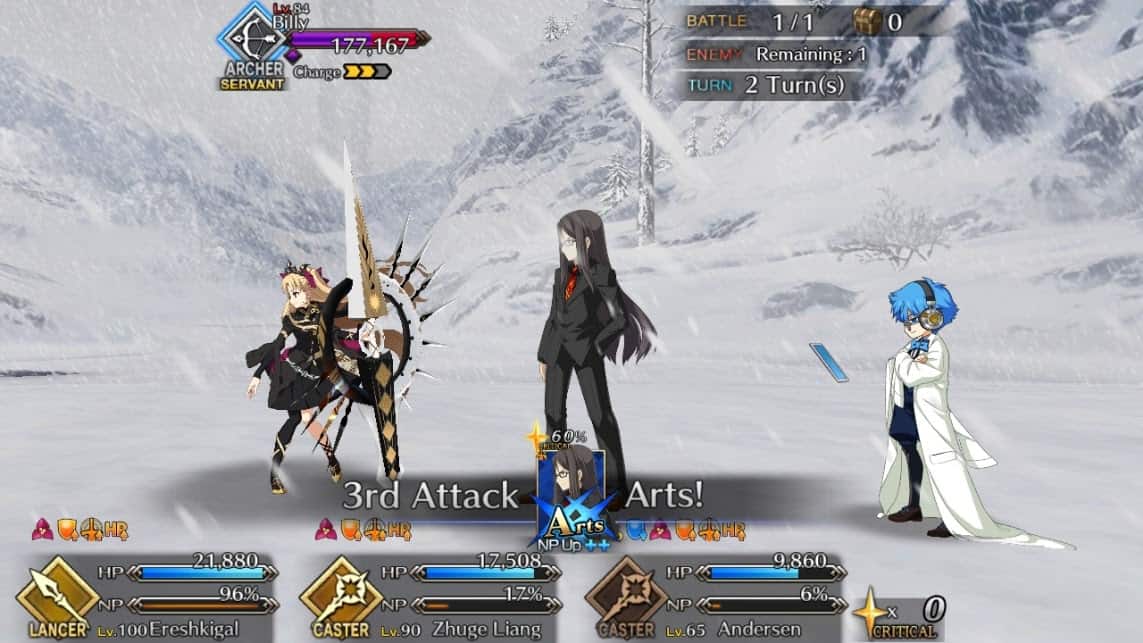
After factoring crits, some characters, MCs, and CEs have access to buffs to your NP generation. First, Card Performance buffs for Quick and Arts provide a multiplier to the base NP charge of that card. This means that if you have a first position arts card, they won’t multiply the upgraded values, thankfully other multipliers do apply. This can make those card type buffs very desirable since they buff damage and charge.
NP Generation buffs, however, like Ereshkigal’s Blessing from Kur pictured above, apply universally to all cards. They’ll even help multiply the generation of post-Arts Buster cards. However, this sort of buff is actually pretty uncommon and is even less common in a targetable format. Generally, it comes in the form of Golden Rule or Tesla and Frankenstein’s similar but lower CD Galvanism and only benefits a single character. Just like when dealing with damage, buffs stack additively with the same type, and multiplicatively with other types. This means the best way to increase your NP gen is also to pursue whichever buff you have less of between Arts/Quick Performance and NP Generation Up.
Overkill
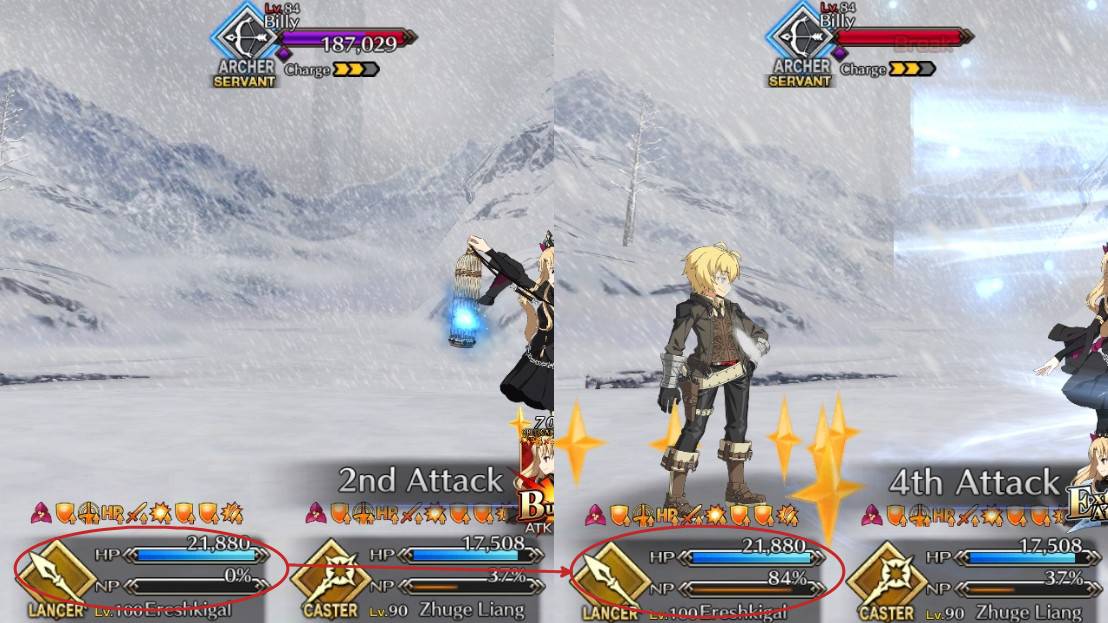
Last, but certainly not least, one of the worst understood mechanics in the game. Overkill occurs whenever an individual hit strikes an enemy who has 0 HP. Technically this is separated into Overkill for dead enemies, and Overgauge for broken bosses, but the results are identical. Do note that the individual hit portion is important here. If you have a multihit card and the first hit kills, all further hits benefit from overkill.
This is probably the single most important part of the NP generation formula because it answers the question that’s going to become one of the most common in the game; can they loop? Overkill is a 1.5x multiplier to the NP generation of any hit that benefits from it. Traditionally, you’d often see this happening with late cards in a brave chain. It’s why third position arts cards in the traditional BQA brave often produce extremely high charge. What you’re seeing in the screenshots above is Ereshkigal’s six-hit arts card critting with overkill in position three.
This starts to become massively important when looking at high hit AoE Noble Phantasms. Notable examples like Enfer Chateau d’If with 8 hits can regenerate massive amounts of NP charge when overkilling three targets. This is often enough to put these sorts of characters in range of an NP battery to top them off, allowing super smooth farming. Of course, overkill also applies to break gauges so you can attempt this with single target high hit characters during Challenge Quests, but most have some sort of gimmick to stop you from looping through them.
Generally, do your looping calculations on farm characters, but be aware it’s usually not a be-all end-all. Sometimes looping can still be less efficient than farming in a more traditional fashion because of CE or team cost requirements. It also usually relies on hair’s breadth recharges that will break if you miss an overkill hit or if the node is poorly suited to your looper. If you can’t loop, don’t worry, you’ll still farm fine without it, and trying to loop CQs is usually a lesson in praying for good RNG and resetting to prove you can while traditional strategies clear consistently.

